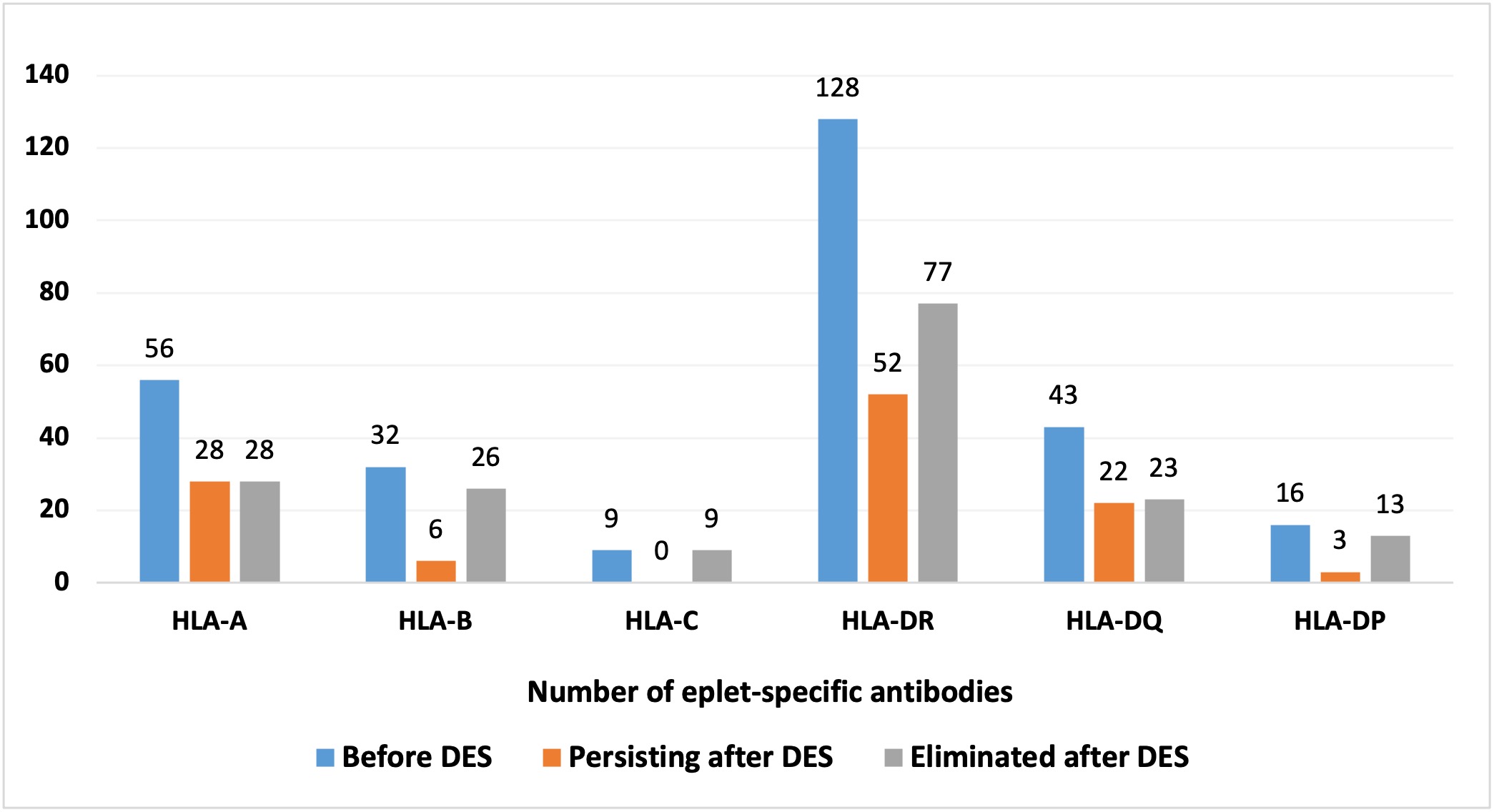Erol Demir, Turkey has been granted the TTS Scientific Congress Award
Desensitization-resistant eplet-specific HLA antibodies
Sebahat Akgul1, Umit Aslanhan1, Reza Kazamzadeh1, Yaren Alan1, Erol Demir1, Deniz Ece Salli1, Amir Tabatabaei1, Talin Catalbasyan1, Demir Kaan Demir1, Mehmet Kanbay2, Burak Kocak3, Caner Susal1.
1Transplant Immunology Research Center of Excellence TIREX, Koç University Hospital, Istanbul, Turkey; 2Department of Medicine, Division of Nephrology, Koç University Hospital, Istanbul, Turkey; 3Münci Kalayoglu Organ Transplantation Center, Koç University Hospital, Istanbul, Turkey
Introduction: In living donor kidney transplantation, it is important to know beforehand which HLA antibodies are more prone and which are more resistant to cost-intensive desensitization therapy. We investigated the impact of desensitization on the clearance of antibodies against eplets from different HLA loci.
Methods: All adult patients who received a living-donor kidney transplant at Koç University Hospital between December 2018 and March 2023 after desensitization therapy due to donor-specific HLA antibodies with ≥500 mean fluorescence intensity (MFI) in single antigen testing were considered for the study. The disappearance (MFI < 500) and persistence (MFI ≥ 500) of eplet-specific antibodies against various HLA loci were analyzed before and after the fourth plasmapheresis session in the desensitization protocol, utilizing the HLAMatchmaker algorithm. The change in MFI following desensitization was calculated based on the highest value of each eplet in each locus.
Results: Prior to desensitization, HLA antibodies targeting 284 eplets were detected in 33 patients, with MFI values ranging from 595 to 41,030. After desensitization therapy, antibodies targeting 176 eplets (61%) with MFIs ranging from 664 to 25,000 were successfully eliminated, while antibodies against 108 eplets (38%) with MFI ranging from 595 to 41,030 persisted in all cases, and two new eplet-specific antibodies were observed. Desensitization successfully removed all nine HLA-C eplet-specific antibodies, as well as 81% of HLA-B and 81% of HLA-DP eplet-specific antibodies ( ). Desensitization successfully removed all nine HLA-C eplet-specific antibodies and 81% of both HLA-B and HLA-DP eplet-specific antibodies, resulting in respective reductions of 100%, 83%, and 92% in MFI values at these loci. The highest rates of desensitization persistence were observed with 50% in HLA-A, 53% in HLA-DQ, and 60% in HLA-DR eplet-specific antibodies, with corresponding reductions in locus-specific mean fluorescence intensity (MFI) values at these loci oof 78%, 75%, and 69%, respectively, following desensitization.
). Desensitization successfully removed all nine HLA-C eplet-specific antibodies and 81% of both HLA-B and HLA-DP eplet-specific antibodies, resulting in respective reductions of 100%, 83%, and 92% in MFI values at these loci. The highest rates of desensitization persistence were observed with 50% in HLA-A, 53% in HLA-DQ, and 60% in HLA-DR eplet-specific antibodies, with corresponding reductions in locus-specific mean fluorescence intensity (MFI) values at these loci oof 78%, 75%, and 69%, respectively, following desensitization.
|
HLA Loci |
A | B | C | DRB1/3/4/5 | DQ | DP |
|---|---|---|---|---|---|---|
| Before DES |
12,515±3,759 |
12,195±4,790 | 4,935±1,252 |
13.285±7,032 |
17,719±11,716 | 12,827±2,844 |
| After DES | 2,736±3,544 |
2,051±4,579 |
<500 |
4,180±4,904 |
4,386±5,995 | 968±2,215 |
| Decrease in MFI | 9,779±4,007 |
10,143±4,937 |
4,634±1,252 | 9,104±6,025 | 13,333±12,928 | 11,859±2,574 |
DES, desensitization. All the values are provided as mean±standard deviation.
Conclusion: Desensitization therapy appear to exhibit MFI[CS1] -independent effects on eplet-specific antibodies and may not be successful for antibodies directed especially against certain eplets from HLA-DR, -DQ and -A loci, whereas antibodies against HLA-C, -B, and --DP eplets appear to be more prone to elimination by desensitization. However, these findings need to be evaluated in a further larger series of desensitized patients.
[1] Desensitization
[2] kidney transplantation
[3] Eplet-Specific HLA Antibodies
